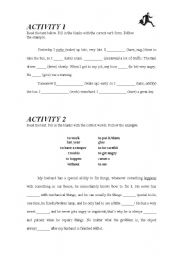
|
Activities
It´s an activity where the students have to integrate simple past with idiomatic future. In the vocabulary activity they just fill in the blanks.
Level: intermediate
Age: 5-17
Type: worksheet
Downloads: 0
|
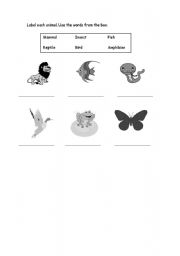
|
Animal Groups
A worksheet to introduce students to the classification of animals
Level: elementary
Age: 5-17
Type: worksheet
Downloads: 0
|
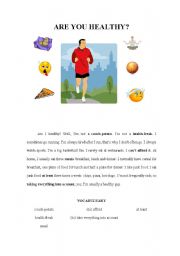
|
ARE YOU HEALTHY?
It´s a small reading activity with a questionnaire at the end. The words in bold are words students MIGHT not know. At the end of the reading there are some questions related to the story. After that there are a few questions so students can practice frequency adverbs.
Level: elementary
Age: 5-17
Type: worksheet
Downloads: 16
|
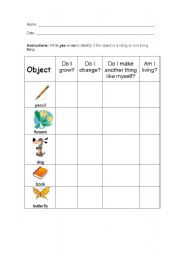
|
Living and Non Living Chart
A chart to help students understand the difference between living and non living things. It´s a base to teach more advanced science concepts
Level: elementary
Age: 5-17
Type: worksheet
Downloads: 3
|

|
MR. COOL
"We use have to more often than must, especially in spoken English." Unit 34, pg. 68. Murphy, Raymond with William R. Smalzar. BASIC GRAMMAR IN USE. 2nd Edition. Cambridge University Press.
Alot of other books which I have seen emphasize using must, when in reality, it´s more common to hear have to. This worksheet has students practice only hav...
Level: intermediate
Age: 6-17
Type: worksheet
Downloads: 5
|
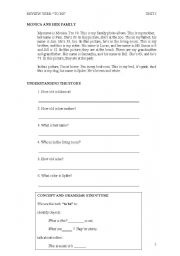
|
Review of the Verb to Be
A quick story to review concepts used with the verb to be
Level: elementary
Age: 8-17
Type: reading
Downloads: 9
|
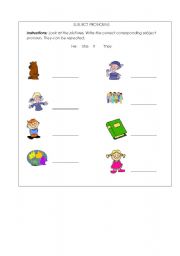
|
Subject Pronouns
This should be followed after the explanation of subject pronouns. It´s just a small activity to reinforce the concept.
Level: elementary
Age: 6-17
Type: worksheet
Downloads: 2
|
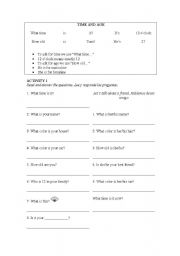
|
Time and Age
After teaching or reviewing the numbers and practicing orally how we can use numbers and the verb to be in class, I give this to my students so they dont forget the concepts that we practiced. It´s a simple activity.
Level: elementary
Age: 5-17
Type: worksheet
Downloads: 2
|